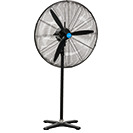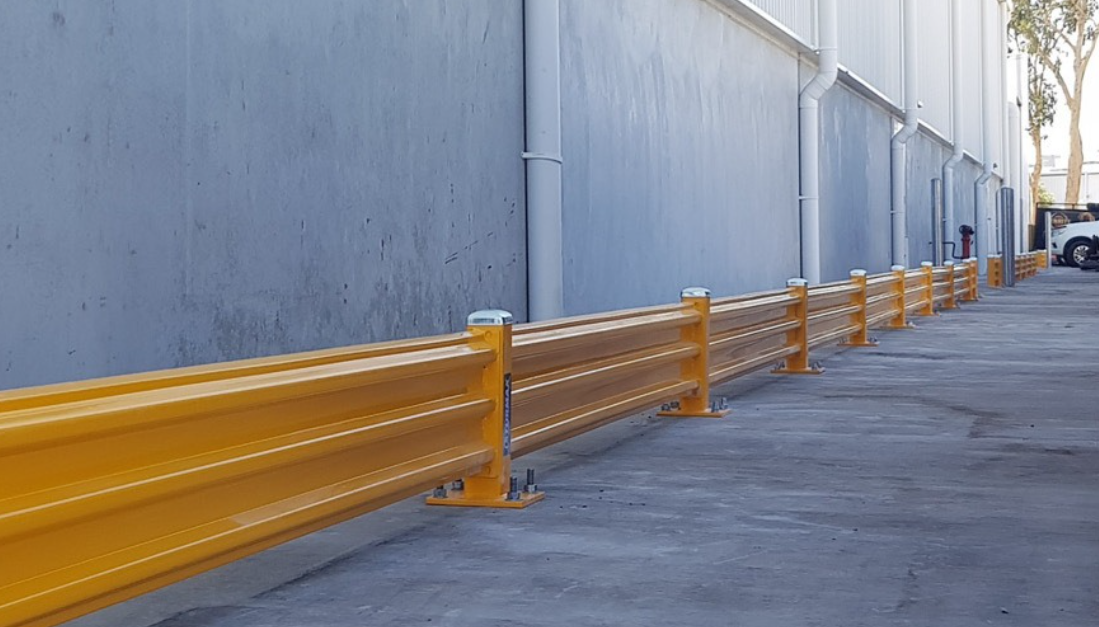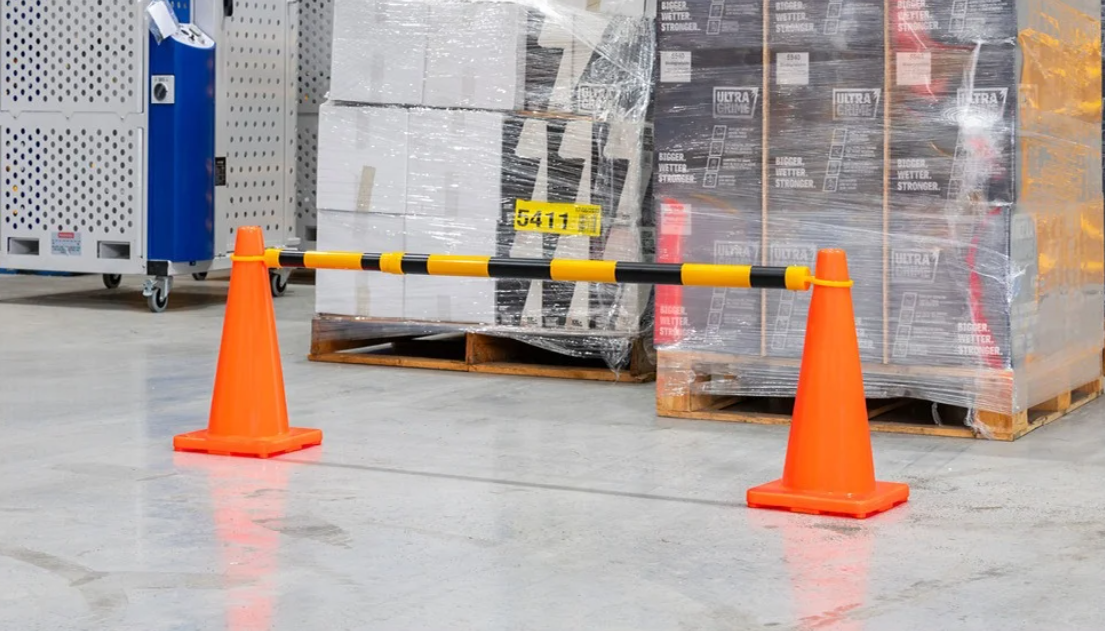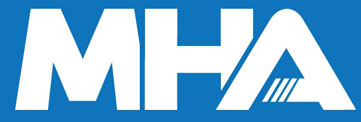5 Best Practices with Barriers That Keep Warehouses WHS Compliant
Date Posted:7 October 2025
Safer warehouses start here. Discover 5 WHS compliance best practices for using safety barriers to protect staff, equipment, and infrastructure while reducing risks.
Verdex Insights: At a Glance
-
The Challenge: Warehouses face complex safety obligations under WHS standards, with frequent risks from forklifts, falling objects, and poor site layout. Many facilities struggle to meet compliance requirements while maintaining smooth operations.
-
The Insight: Installing the right warehouse barriers prevents collisions, protects walkways, and clearly defines hazard zones. These systems support WHS compliance by improving traffic control, organisation, and worker safety.
-
The Verdex Solution: Verdex supplies WHS-compliant safety barriers, bollards, signage, and PPE designed for warehousing, logistics, and manufacturing environments. Our barrier systems help businesses prevent accidents, safeguard staff, and maintain efficient, compliant worksites.
Compliance and Safety: Meeting WHS Standards with Warehouse Barriers
Warehouse safety is of paramount importance, not only to protect inventory and equipment but also to ensure the safety of workers. For businesses operating in environments like warehouses and distribution centres, adhering to Work Health and Safety (WHS) regulations is critical.
WHS standards in Australia set strict guidelines to ensure workplace safety across various industries, including warehousing. One of the most effective ways to meet these safety requirements and improve overall safety is through the installation of warehouse barriers.
In this blog, we’ll walk through 5 best practices for using barriers that help warehouses stay WHS compliant. Each practice highlights how barriers not only reduce risks but also keep operations running smoothly and efficiently.
What Are WHS Standards for Warehouse Safety?
WHS regulations establish and enforce workplace safety standards in Australia. In the context of warehouses, these guidelines aim to reduce accidents and injuries that can occur during the daily operations of moving goods, handling materials, and operating machinery.
The WHS requirements relevant to warehouses primarily focus on:
-
Safe Material Handling and Storage: Ensuring that goods are safely stored and handled to avoid injuries caused by falling objects or improper storage practices.
-
Forklift and Equipment Safety: Implementing guidelines on the safe use of forklifts, pallet jacks, and other industrial vehicles.
-
Personal Protective Equipment (PPE): Providing employees with appropriate protective equipment, such as helmets, gloves, and other personal safety gear, is a non-negotiable requirement. Outfitting teams with the right PPE clothing is one of the most effective ways to meet this obligation and reduce injuries.
-
Safe Environmental Design: Creating safe environments through the design of spaces that limit the potential for accidents.
Understanding these requirements is the foundation for the 5 best practices we’ll outline next. Each practice shows how warehouse barriers directly support WHS compliance while giving businesses a clear, practical path to safer operations.
Best Practice 1. Preventing Forklift Accidents
Forklifts and other material handling equipment are essential for moving goods in a warehouse. However, they are also responsible for a significant number of warehouse injuries, including collisions with workers, inventory, and infrastructure. According to WHS guidelines, maintaining a safe environment for operating forklifts is crucial to preventing accidents.
How Warehouse Barriers Help:
-
Physical Barriers for Traffic Control: Installing safety barriers along high-traffic areas or near dangerous zones such as loading docks and intersections can prevent forklifts from accidentally veering off course. Bollards and barriers act as a physical boundary, clearly marking areas where vehicles and pedestrians are not permitted to cross. This reduces the chance of forklift operators unintentionally driving into restricted areas.
-
Protecting Pedestrian Walkways: Barriers are also an effective way to separate pedestrian walkways from forklift paths, helping reduce the risk of accidents involving workers. WHS requirements mandate that pedestrian traffic be kept away from operating machinery, and the installation of these barriers helps reinforce this safety standard.
-
Minimising Damage to Infrastructure: Barriers help protect not only people but also vital infrastructure, such as walls, columns, and shelving units. By preventing forklifts from colliding with these structures, warehouse barriers contribute to reducing downtime due to damage and avoid costly repairs.
While barriers play a critical role in WHS compliance, selecting the right type is just as important. At Verdex, we offer a wide range of material handling equipment and barrier solutions designed to meet both safety needs and regulatory standards.
Best Practice 2. Preventing Falling Objects and Material Handling Hazards
WHS regulations also mandate that warehouses take measures to prevent objects from falling and causing harm. The storage and movement of materials must be carried out in a manner that eliminates the risk of injury from falling items.
How Warehouse Barriers Help:
-
Protecting Shelves and Racks: Safety barriers around shelving units and racks ensure that goods stored at height remain secure. In the event of a forklift collision or accidental bump, the barriers absorb the impact, preventing shelves from tipping over or items from falling.
-
Guarding High-Risk Storage Areas: For areas storing hazardous or fragile materials, barriers can help isolate them from heavy traffic zones. This not only complies with WHS requirements but also provides an extra layer of security for high-value or dangerous items.
-
Creating Safe Work Zones: Safety barriers can be used to cordon off dangerous areas where lifting or handling of heavy items is taking place. These zones are marked clearly, reducing the risk of workers coming into contact with overhead loads or falling objects.
Alongside barriers, investing in a full range of workplace safety supplies and equipment ensures warehouses are prepared to handle risks from every angle.
Best Practice 3. Protecting Employees from Moving Equipment
WHS also places a strong emphasis on protecting workers from moving equipment and machinery. This includes forklifts, pallet jacks, and conveyors. While operators are trained to handle these machines safely, accidents can still occur due to unexpected human error or equipment malfunction.
How Warehouse Barriers Help:
-
Physical Barriers for Personnel Protection: Installing barriers around moving equipment, such as forklifts and conveyor systems, helps create clear boundaries between employees and machinery. This not only meets WHS standards but also keeps workers safe from unintentional collisions or being in the way of moving vehicles.
-
Preventing Unauthorised Access: WHS requirements specify that workers be kept away from hazardous or heavy-duty machinery. Barriers provide a clear indication of restricted zones, preventing workers from wandering into areas where they might be exposed to moving equipment.
-
Guarding Dangerous Machines: In areas where large or potentially dangerous machinery is in use, safety barriers can provide an additional layer of protection, helping to avoid accidents that may result from machinery malfunctions or operator errors.
Even with clear boundaries in place, it’s vital that warehouses are also equipped with accessible workplace first aid kits to respond quickly if an incident does occur.
Best Practice 4. Improving Warehouse Organisation and Safety Compliance
Proper warehouse organisation is another key factor in meeting WHS standards. Again, these guidelines emphasise the importance of clear walkways, organised inventory storage, and properly marked hazardous zones. An organised environment not only reduces the risk of accidents but also ensures that workers have a clear understanding of their responsibilities and boundaries.
How Warehouse Barriers Help:
-
Organisation of Traffic Flow: Barriers play an essential role in ensuring that traffic flow within a warehouse is organised and predictable. By separating pedestrian pathways from vehicle routes, barriers help reduce congestion and create safer working environments. In turn, this improves the overall safety compliance of the warehouse.
-
Clear Hazard Zone Identification: Barriers are often used to demarcate dangerous areas within the warehouse, such as spaces where hazardous materials are stored or machinery is operated.
-
Efficient Emergency Evacuation Routes: Barriers can also be used to define clear and unobstructed evacuation routes, which is an essential component of WHS compliance. In the event of an emergency, workers need to know where to go, and barriers help ensure these routes are easily identifiable and accessible.
To reinforce these boundaries, pairing physical barriers with safety signs for workplaces ensures that workers are constantly reminded of hazards and safe pathways.
Best Practice 5. Ensuring Fire Safety Compliance
Fire safety is a critical part of WHS regulations. In warehouses, there are a number of potential fire hazards, including electrical equipment, flammable materials, and malfunctioning machinery. Safety barriers can help protect against these risks.
How Warehouse Barriers Help:
-
Protecting Fire Exits and Equipment: Barriers can be installed around fire extinguishers, alarm systems, and emergency exits to prevent them from being obstructed or damaged.
-
Containing Hazards: For warehouses that store flammable materials, barriers can help contain spills, leaks, or fires, reducing the risk of a fire spreading to other areas. This limits the potential damage and helps protect both workers and inventory.
Apply These 5 Best Practices to Keep Your Warehouse WHS Compliant
Meeting WHS standards is essential for every warehouse, not only to avoid penalties but also to create a safe working environment. Safety barriers are an invaluable tool in achieving compliance.
They prevent forklift accidents, protect against falling objects, and help create clear boundaries that keep workers and equipment safe. Additionally, barriers contribute to overall warehouse organisation, improving traffic flow, and reducing the risk of injuries or damage.
For warehouse operators looking to ensure that their facilities meet WHS standards and improve safety, investing in the right safety barriers is a practical and cost-effective solution. These barriers provide a physical layer of protection that not only helps to safeguard employees but also ensures the warehouse operates smoothly and efficiently, while meeting all necessary safety regulations.
Get in Touch with the Verdex Team
Ready to make your warehouse safer and fully WHS compliant? The team at Verdex can help you choose and install the right safety barriers for your facility.
-
Email sales@verdex.com.au
-
Or simply fill out our online contact form and we’ll get back to you promptly
































































































































 Trolleys & Hand Trucks
Trolleys & Hand Trucks Cage Trolleys
Cage Trolleys Cleaning Carts & Trolleys
Cleaning Carts & Trolleys Construction Trolleys
Construction Trolleys Custom Trolleys
Custom Trolleys Hand Trucks & Dollies
Hand Trucks & Dollies Laundry/Linen Trolleys
Laundry/Linen Trolleys Lifting Trolleys
Lifting Trolleys Order Picking Trolleys
Order Picking Trolleys Panel Cart Trolleys
Panel Cart Trolleys Platform Trolleys
Platform Trolleys Powered Trolleys
Powered Trolleys Shelf & Tiered Trolleys
Shelf & Tiered Trolleys Shopping Trolleys
Shopping Trolleys Stainless Steel Trolleys
Stainless Steel Trolleys Tool Trolleys
Tool Trolleys Utility & Service Carts
Utility & Service Carts Lifting & Handling Equipment
Lifting & Handling Equipment Forklift Attachments
Forklift Attachments Jib Attachments
Jib Attachments Lifting Hoists & Pallet Hooks
Lifting Hoists & Pallet Hooks Load Skates & Tow Tugs
Load Skates & Tow Tugs Manual Stackers & Lifters
Manual Stackers & Lifters Pallet Jacks
Pallet Jacks Pallet Lifters
Pallet Lifters Pallet Rotators & Dispenser
Pallet Rotators & Dispenser Powered Pallet Trucks & Electric Lifters
Powered Pallet Trucks & Electric Lifters Scissor Lift Trolleys and Tables
Scissor Lift Trolleys and Tables Conveyor Equipment
Conveyor Equipment Conveyor Frames & Stands
Conveyor Frames & Stands Roller & Skate Conveyors
Roller & Skate Conveyors Ladders & Access Equipment
Ladders & Access Equipment Container & Yard Ramps
Container & Yard Ramps Ladders & Step Stools
Ladders & Step Stools Work Platforms & Crane Cages
Work Platforms & Crane Cages Drum Handling Equipment
Drum Handling Equipment Drum Storage & Bunding
Drum Storage & Bunding Drum Trolleys & Lifters
Drum Trolleys & Lifters Forklift Drum Handling
Forklift Drum Handling Waste Handling & Bins
Waste Handling & Bins Bin Lifters & Tippers
Bin Lifters & Tippers Plastic Waste & Wheelie Bins
Plastic Waste & Wheelie Bins Steel Waste & Tipping Bins
Steel Waste & Tipping Bins Waste Carts
Waste Carts Dangerous Goods Storage & Spillage
Dangerous Goods Storage & Spillage Aerosol Cans Storage Cages
Aerosol Cans Storage Cages Bunded Pallets & Storage
Bunded Pallets & Storage Corrosive Goods Storage Cabinets
Corrosive Goods Storage Cabinets DG Storage & Trolleys
DG Storage & Trolleys Flammable Liquid Cabinets
Flammable Liquid Cabinets Forklift Gas Storage Cages
Forklift Gas Storage Cages Site Storage
Site Storage Spill Kits
Spill Kits Shelving & Storage Equipment
Shelving & Storage Equipment Stillage & Transport Cages
Stillage & Transport Cages 750 Series Cage Configurations
750 Series Cage Configurations Heavy Duty Cabinets
Heavy Duty Cabinets Heavy Duty Shelving
Heavy Duty Shelving Mega Bins & Pallets
Mega Bins & Pallets Packing & Workbenches
Packing & Workbenches Parts Trays & Stor-Pak Bins
Parts Trays & Stor-Pak Bins Pegboard & Louvre Panels
Pegboard & Louvre Panels Plastic Bins & Crates
Plastic Bins & Crates Plastic Handling Solutions Bins
Plastic Handling Solutions Bins Plastic Pallets
Plastic Pallets Stack & Nest Bins
Stack & Nest Bins Pallet Racking Accessories
Pallet Racking Accessories Workplace Equipment
Workplace Equipment Modular Workbenches
Modular Workbenches Electric Height-Adjustable Workbenches
Electric Height-Adjustable Workbenches Floor Matting
Floor Matting General Workplace Equipment
General Workplace Equipment Industrial Weighing Scales
Industrial Weighing Scales Packaging Machinery
Packaging Machinery Stationery Cupboards
Stationery Cupboards Storage and Stillage Cages
Storage and Stillage Cages Tool Trolleys
Tool Trolleys Tooling Cabinets
Tooling Cabinets Workshop Fans and Coolers
Workshop Fans and Coolers Safety Barriers, PPE & Signage
Safety Barriers, PPE & Signage Barriers & Bollards
Barriers & Bollards First Aid Equipment
First Aid Equipment Gloves, Knives and PPE
Gloves, Knives and PPE Signage
Signage Cleaning & Site Supplies
Cleaning & Site Supplies Cleaning Equipment
Cleaning Equipment Cleaning Trolleys
Cleaning Trolleys Rubbish Bins
Rubbish Bins Signs & Traffic Supplies
Signs & Traffic Supplies Construction Equipment
Construction Equipment Construction Trolleys
Construction Trolleys Waste Handling
Waste Handling General Site Equipment
General Site Equipment Concrete Equipment
Concrete Equipment Site Storage
Site Storage Lifting Equipment
Lifting Equipment Verdex Specials
Verdex Specials











